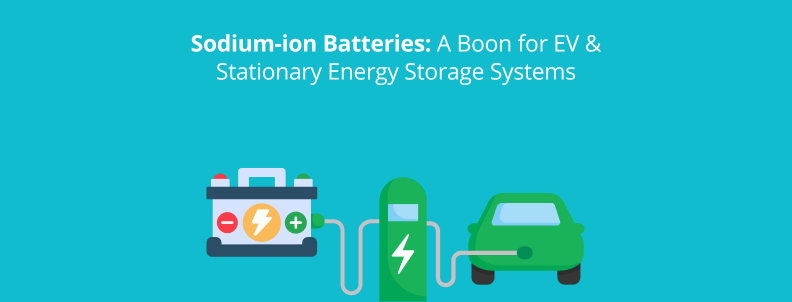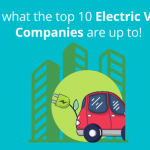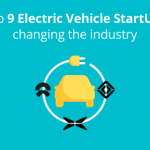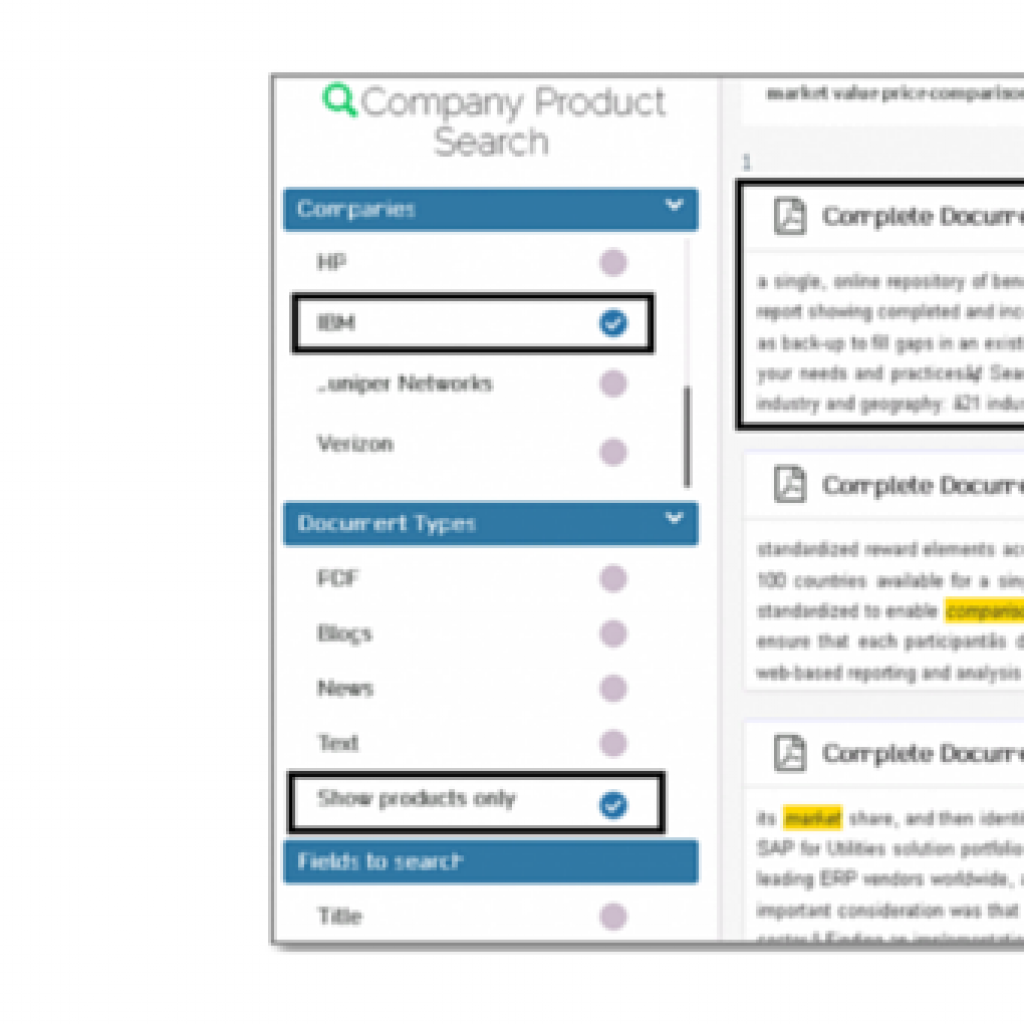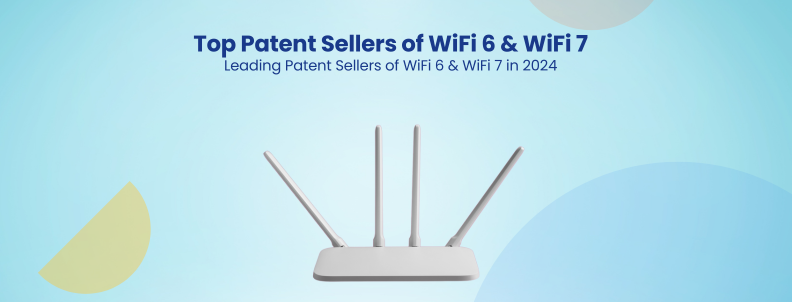Lithium-ion batteries have been the dominant energy source in electric vehicles (EVs) for more than 2 decades now. However, in recent years, a new worthwhile contender has emerged, one which is more abundant in nature: sodium-ion batteries.
As the name suggests, these batteries have sodium ions as the charge carrier. The transfer of ions between the electrodes, with an electrolyte in between, is similar to lithium-ion. However, sodium-ion batteries use sodium ions in the cathode, compared to lithium-ion in Li-ion batteries.
In March 2022, a new sodium-ion battery technology developed by Chinese behemoth, CATL, gained a lot of attraction. The emergence of this alternative battery technology results from the ecological challenges in recycling lithium-ion batteries and the high availability of Sodium in the earth’s crust. Despite lower energy density than lithium-ion batteries, sodium-ion batteries present a potential for EV energy storage needs.
Evidently, some prominent companies are heavily researching this energy source and its storage. In fact, many of them are already bringing Sodium-ion batteries to the market.
Besides Sodium-ion batteries, 10 other trends are innovating the energy storage industry. Fill out the form to get the report directly to your inbox:
Recent Developments in Sodium-ion Batteries
One of the key challenges faced by companies researching Sodium-ion batteries as an alternative is their low energy density compared to lithium-ion. While research into sodium-ion batteries has been around since the 1970-1980s, they have only recently started gaining traction. Here are some of the key developments in the space.
1. CATL NIB Battery
CATL unveiled its first-generation NIB in 2021, featuring an impressive energy density of 160 Wh/kg. This achievement positioned them as frontrunners in the commercialization of NIBs, a field still in its early stages. CATL hasn’t settled on its initial success. They are actively developing next-generation NIBs with an energy density exceeding 200 Wh/kg, a significant leap closer to competing with the current range of lithium-ion batteries.
Recognizing the strengths of both technologies, CATL is also pioneering the integration of NIBs and lithium-ion batteries. Their AB battery system technology allows for a mix of both types in a single battery pack, potentially optimizing cost, performance, and sustainability.
They actively invite upstream suppliers, downstream customers, and research institutions to join forces and accelerate the development and promotion of this emerging technology.
2. HiNa’s Sodium-ion Battery
HiNa Battery, also known as Zhongke Haina Technology Co., is a company that specializes in creating and manufacturing sodium-ion batteries for energy storage systems and low-speed vehicles.
The company is actually at the forefront of innovation in the sodium-ion battery domain, with more than 20 patents filed in this tech. With an R&D team led by academician Chen Liquan and researcher Hu Yongsheng, both members of the Chinese Academy of Engineering and Institute of Physics, Chinese Academy of Sciences, we can expect nothing less.
HiNa Battery is focused on creating sodium-ion batteries that are affordable, long-lasting, safe, and have a high-energy density as they can supply positive and negative electrode materials and electrolytes required for them. Although the company primarily aims to use sodium-ion batteries for energy storage systems, it also explores potential applications in various areas such as electric bicycles, low-speed electric vehicles, communication base stations, data centers, home energy storage, and large-scale energy storage. This versatility sets HiNa Battery apart from others in the industry who may only be focused on one or two specific applications. (Source)
Additionally, in Feb 2023, HiNa Battery introduced three new products consisting of sodium-ion battery cells. They also announced a partnership with Anhui Jianghuai Automobile Group Corp (JAC), which has selected one of its car models to be the first to use sodium-ion batteries. Hina Battery and Sehol, a brand created through a joint venture between JAC and Volkswagen Anhui, have developed a test vehicle that uses sodium-ion batteries based on the Sehol E10X model.

Source: CNEV Post
The battery pack in the test vehicle has a capacity of 25 kWh and an energy density of 120 Wh/kg. The vehicle has a range of 252 km and supports fast charging of 3C to 4C. The battery pack consists of cells with an energy density of 140 Wh/kg. (Source)
3. Faradion Non-aqueous Sodium-ion Battery
Faradion has been at the forefront of identifying and utilizing the potential of sodium ions in rechargeable batteries. Being one of the first companies to work on sodium-ion batteries, Faradion has amassed more patents in this area than its competitors, solidifying its position as a market leader in non-aqueous sodium-ion batteries.

Source: Faradion
The sodium-ion batteries developed by Faradion are recognized as an emerging technology and are considered a key component in providing cheaper and cleaner energy. One advantage of Faradion’s sodium-ion batteries is that they can use the same manufacturing processes and equipment as lithium-ion batteries. This means they can be produced using existing manufacturing infrastructure, which can help reduce production costs.

Another advantage of Faradion’s sodium-ion batteries is that they can be used in various applications, including electric vehicles, grid storage, and portable electronics.
The company is currently working to commercialize its sodium-ion battery technology and has partnered with several companies to develop applications for its batteries. It believes that sodium-ion batteries have the potential to become a key player in the growing energy storage market.
But why are sodium-ion batteries a strong contender for Lithium-ion and other energy storage batteries?
Sodium-ion Batteries – a Better Alternative
The research on replacing lithium-ion batteries in day-to-day life with sodium-ion batteries is still nascent. But, it is powered by the many advantages of sodium-ion batteries.
- Sodium is the sixth most abundant element on the planet, found in large deposits worldwide. It is 500 times more abundant than lithium and costs 1-2% of the price of lithium. This makes it an attractive option for energy storage, particularly in countries with limited access to lithium.
- Sodium-ion batteries also have a longer cycle life than most batteries, so they can be charged and discharged more before degrading.
- Not to mention, sodium-ion batteries are safer than lithium-ion batteries, as they have a lower risk of thermal runaway.
- Even though their energy density is lower than lithium-ion batteries, they have a higher energy density than other types of batteries, such as lead-acid or nickel-cadmium. This allows them to store more energy per unit of weight or volume, making them a more efficient solution for energy storage.
- Lastly, they are more sustainable and environmentally friendly, as they do not require rare and expensive metals like cobalt or nickel.
How will Sodium-ion Batteries Change the Future of Energy Storage?
1. Transportation – Electric Vehicles
Sodium-ion batteries have several potential applications in the energy industry. One of the most promising applications is in electric vehicles (EVs), which could offer a more cost-effective and efficient solution for energy storage. EVs require high-capacity batteries that store enough energy to power the vehicle for long distances. Sodium-ion batteries not only fulfill that demand to an extent but are also a more affordable and sustainable alternative to lithium-ion batteries. Moreover, with the increasing demand for EVs, the battery market will require about a hundred billion dollars of battery power by 2025, and as the world transitions towards a more sustainable future, sodium-ion batteries could be a key part of the solution.
2. Energy Storage – Stationary Energy Storage Systems
Another potential application of sodium-ion batteries is in stationary energy storage systems. They can store energy from renewable sources such as wind and solar power. These systems could help to balance the grid and ensure a more stable supply of energy, reducing the need for fossil fuel power plants.
Also, sodium-ion batteries have applications in the aerospace industry, where they can power satellites and other spacecraft. The long cycle life of sodium-ion batteries compared to most batteries makes them an attractive option for space applications, where reliability and efficiency are critical.
In a Nutshell
Innovation is underway to overcome the challenges in the sodium-ion battery domain, and several major EV companies are already investing in it. Chinese automotive giant BYD has launched its sodium-ion-powered EV, and Volkswagen has provided technical input to help improve the technology.
JAC, another Chinese automaker, has been working on a sodium-ion battery for its Sehol E10x model. The vehicle uses lithium-ion batteries, but JAC plans to switch to sodium-ion batteries to increase the vehicle’s range and lifespan while reducing costs.
In conclusion, sodium-ion battery technology represents a significant breakthrough that could transform the energy storage and EV industries. The world is transitioning towards a more sustainable future, and sodium-ion batteries could be a worthy alternative to traditional lithium-ion batteries.
Planning to invest in the rapidly evolving field of Sodium-ion batteries and want to assess their potential for commercialization? Collaborate with the experts at GreyB.
Next read- Top Battery Energy Storage Systems Companies
Authored by: Vipin Singh, Marketing team

